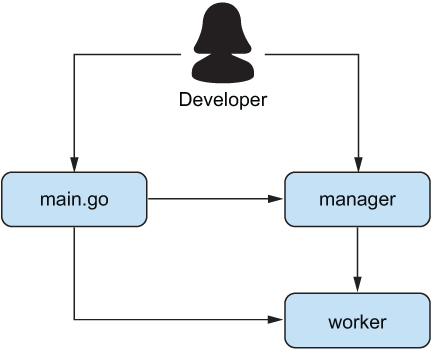Throughout the book, we have been using a crude main program to operate our orchestration system (figure 12.1). This program is a single monolith that does it all: starts the workers, starts the workers’ API servers, starts the manager, and starts the manager’s API server. If we want to stop the manager for any reason, we also stop the workers, and vice versa. When we want to interact with the orchestrator, however, we do this separately via the curl command.
Now that we have our orchestration system implemented, let’s turn our attention to how we operate it. Popular orchestration systems like Kubernetes and Nomad are operated by command-line interfaces (CLIs). Kubernetes uses multiple binaries to implement its CLI:
- kubeadm bootstraps a Kubernetes cluster.
- kubelet performs the same function as our worker (i.e., it runs tasks).
- kubectl provides an interface to interact with the cluster.
Nomad, on the other hand, implements its CLI with a single binary called nomad but otherwise provides a similar interface.
